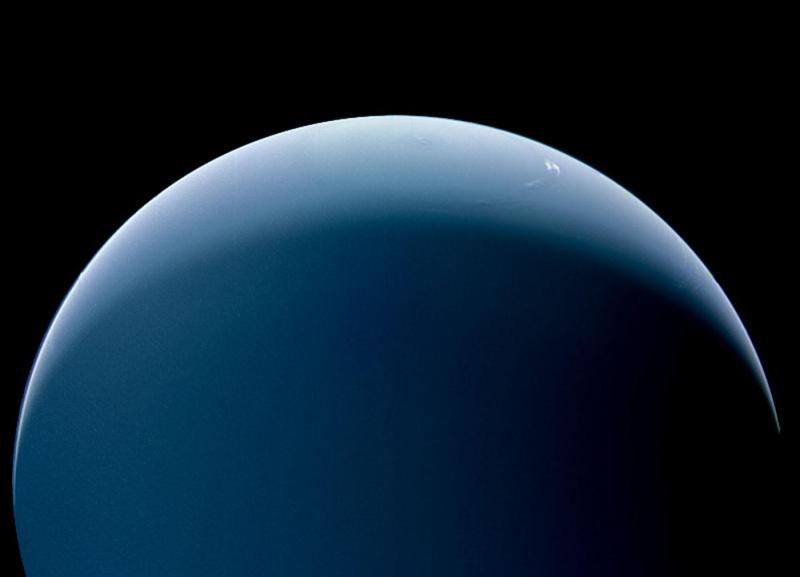-
Neptune’s newest, tiniest moon likely piece of bigger one
February 27, 2019
In the journal Nature on Wednesday, California astronomers shine a light on the 21-mile-diameter moon Hippocamp, named after the mythological sea horse. The SETI Institute's Mark Showalter discovered Neptune's 14th moon in 2013, using Hubble Space Telescope images. Showalter and his research team theorize Hippocamp was formed from debris created billions of years ago when a comet slammed into Proteus, the largest of Neptune's inner moons. The two moons orbit just 7,500 miles apart and were likely even closer in the past before Proteus migrated outward.
Tags:More -
Investor Yuri Milner joins with Berkeley in $100 million search for extraterrestrial intelligence
July 21, 2015
On Monday July 20th, the Breakthrough Prize Foundation and it's founder, famed internet investor Yuri Milner, announced a contract with UC Berkeley that will provide a massive boost of funding towards the search for extraterrestrial intelligence. The foundation has pledged $100 million dollars over the next 10 years to UC Berkeley and other additional institutions as part of the Breakthrough Listen project, a project aimed at creating and building new instruments to better analyze information collected by two telescopes that have been contracted through the project: the 100-meter Robert C. Byrd Green Bank Telescope in West Virginia and the 64-meter Parkes Telescope…
More -
Berkeley SETI at CalDay
May 7, 2015
On CalDay, The Berkeley SETI team set-up shop in the lobby of Campbell Hall and spent the day greeting CalDay attendees and answering questions about stars, planets, and extraterrestrial life; Below is a video provided by Berkeley SETI that captured part of their day!
More -
Department Celebrates First CalDay in Campbell Hall!
April 23, 2015
The Department of Astronomy participated in CalDay, the annual event where campus opens its doors to anyone looking to learn more about Berkeley and explore everything the campus has to offer. CalDay attendees came to participate in a number of hands-on events and activities hosted by the department that included building scale models of the solar system, learning how to read the "fingerprints" of stars, solar viewings, and how Astronomers go about measuring distances of stars. Our portable planetarium was up and running inside Campbell Hall, providing the opportunity for a guided tour of the constellations visible during springtime. SETI and the Space Exploration Society…
Tags:More -
New Instrument Extends the Search for Extraterrestrial Intelligence to New Realms
March 23, 2015
From Astronomy Magazine: "Astronomers have expanded the search for extraterrestrial intelligence into a new realm with detectors tuned to infrared light. Their new instrument has just begun to scour the sky for messages from other worlds. “Infrared light would be an excellent means of interstellar communication,” said Shelley Wright from the University of California (UC) in San Diego who led the development of the new instrument while at the University of Toronto’s Dunlap Institute for Astronomy & Astrophysics. Pulses from a powerful infrared laser could outshine a star, if only for a billionth of a second. Interstellar gas and dust…
More -
Meet Dan Werthimer
February 23, 2015
Watch the Berkeley SETI Research Center's video profile for Dan Werthimer, Chief Scientist and co-founder of SETI@home and long-time department member! Courtesy of the Berkeley SETI Research Center, Chris Schodt, and Steve Croft.
More -
Intelligent civilizations rarer than one in a million
February 8, 2013
"Scientists at UC Berkeley have now used the Green Bank Telescope in West Virginia to look for intelligent radio signals from planets around 86 of these stars. While discovering no telltale signs of life, the researchers calculate that fewer than one in a million stars in the Milky Way Galaxy have planetary civilizations advanced enough to transmit beacons we could detect. “We didn’t find ET, but we were able to use this statistical sample to, for the first time, put rather explicit limits on the presence of intelligent civilizations transmitting in the radio band where we searched,” said Andrew Siemion,…
More -
Planet makes weird loops around dusty star
January 13, 2013
"Newly released NASA Hubble Space Telescope images of a vast debris disk encircling the nearby star Fomalhaut and a mysterious planet circling it may provide forensic evidence of a titanic planetary disruption in the system. Astronomers are surprised to find the debris belt is wider than previously known, spanning a section of space from 14 to nearly 20 billion miles from the star. Even more surprisingly, the latest Hubble images have allowed a team of astronomers to calculate the planet follows an unusual elliptical orbit that carries it on a potentially destructive path through the vast dust ring. The planet,…
Tags:More





